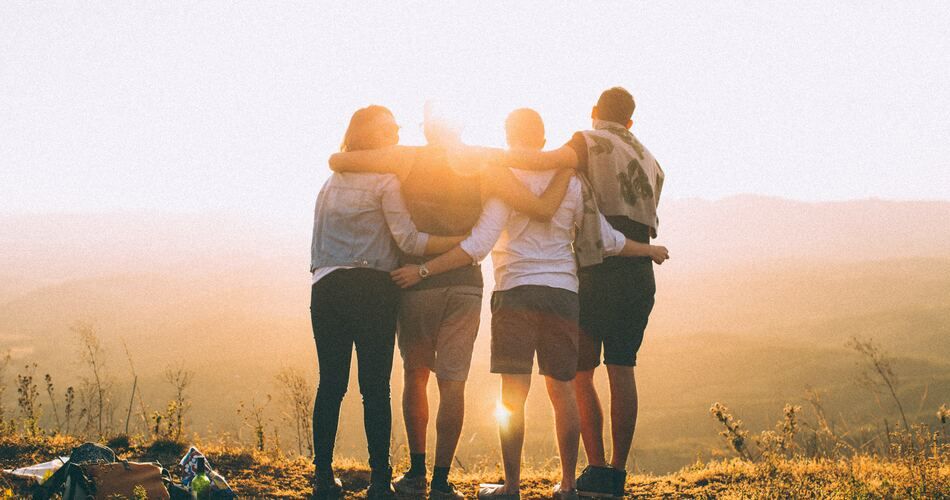Whether nature is incorporated into a small part of your group travel experience or outdoor activity is the sole focus of your trip, engaging with the natural world is one of the best ways to make your travelers feel alive. Outdoor activities also provide an opportunity to create powerful personal and group bonding moments. However, without proper guidance from a leader or guide, it can be easy to engage passively, merely snapping quick photos without changing one’s mindset. Below are some ways you can help your travelers transform themselves—and the group—through encounters with nature.
Encourage Journaling and Sketching
Nature heals our bodies and minds, and journaling is one of the most powerful ways we can escape our thoughts and feel more connected to ourselves and the environment. Consider purchasing journals for your guests and start the trip by encouraging them to use them to record their experiences in nature. Find moments on the tour to stop and journal together, offering prompts and guidance along the way. Artistic activities like sketching and coloring are also great opportunities to create meaningful personal souvenirs of a place and relax our minds.
Create Moments of Silence and Meditation
Most of our daily lives are filled with a dizzying amount of distractions. A personal encounter with a natural landscape can be transformational, but we often need prompting and guidance to snap out of our usual ways of being. Choose a moment on the tour, find somewhere beautiful and serene, and ask your travelers to simply close their eyes, breathe, and connect with nature’s sounds and scents. You can find a wide variety of guided meditation activities online. While the word “meditation” carries loaded connotations, at its core, it’s just about taking a moment to refocus our thoughts.
Use ‘Thought Prompts’ and Themes to Guide an Experience
Whether you’re hiking in a national park, going birdwatching, or taking a group ski trip, you might research a quote to share with everyone before an activity begins, to help frame the adventure ahead. For example, you might begin a birdwatching session by quoting Maya Angelou—”A bird does not sing because it has an answer; it sings because it has a song”—and then ask your travelers to spend the next amount of time thinking about what their song is that they want to sing with their lives. The entire day’s activities could even have a theme, such as gratitude, with each moment tying back to a central insight or idea that helps us use nature to grow personally or as a group.
Create Photography Themes
We are all prone to snapping a photo without much thought, but photography can be a powerful way to unlock creativity. You might encourage travelers to see nature through a different lens by setting daily photography challenges, such as “Water Reflections,” “Macro Textures,” “Sunrise Colors,” etc. You could even print photo submissions and host a small exhibition after the tour at home, or place them in a shared photo album using apps like PhotoCircle, TripCast, or Google Photos.
Use Smartphone Apps to Identify Nature
Whether it’s a plant, tree, flower, or mountain, knowing the names of what we’re looking at is a great way to foster a deeper relationship with our natural world. Google’s own app (for iPhones and Android) allows you to take a photo, and it’ll do its best to identify the subject. There are also specialized apps like PlantSnap for plants, PeakFinder for mountain ranges, and Merlin for identifying birds.
Use Storytelling that Goes Beyond Information
It’s great to give your travelers information about the landscape, but sharing powerful stories can leave a lasting impression. Storytelling transcends mere information to create connections through emotion. You might share a moving personal experience or find unique people that embody the spirit of the area. You could also weave facts about flora, fauna, and geology into a broader statement about the interconnectedness of life. Better yet, hire a local storyteller who will provide insights and authenticity that you, as a traveler, might not possess. This is especially important when sharing Indigenous stories—let local community stakeholders tell their own story, rather than appropriating and misrepresenting their experience.
Educate Everyone on Sustainability and Conservation
One of the most significant lessons a traveler can take away from an encounter with nature is its fragility. From melting glaciers to forests giving way to real estate developments, wherever you find yourself, seize the experience of nature as an opportunity to open the eyes of your travelers to the importance of preserving the land for future generations. Share anecdotes about the recovery or decline of certain species or areas within the park due to human influence. Use success stories to inspire hope, and cautionary tales to underline the importance of responsible behavior. Explain how the principles of conservation in the park can apply to the broader world and discuss how the choices we make at home also impact the environment. When someone is outside their usual environment, their minds are more open to inspiration and education in new ways.
Subscribe to Leisure Group Travel today and always stay up to date on current travel trends and group activities.
Mitch Bach is the co-founder of TripSchool, a learning organization that helps tour guides, tour operators and other travel professionals grow their skills and pursue their travel career dreams.






